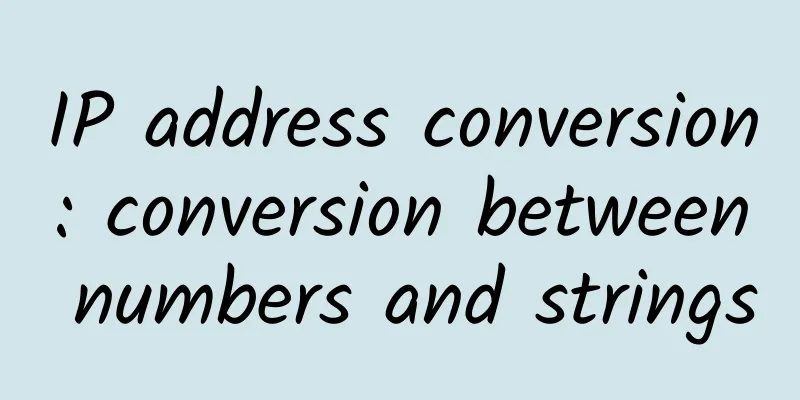IP address conversion: conversion between numbers and strings

|
There are generally two formats for storing IP addresses in the IP address database, one is dotted decimal format (192.168.1.1), and the other is digital format (3232235777). In applications, it is often necessary to convert between these two formats.
To solve this problem, I implemented a quick method for converting between the two in the exnet extension package:
Example of use:
So how do you convert a dotted decimal IP address into a number? An IPv4 address has 4 bytes and looks like this:
Each byte represents the range:
General formula: b4<<24 | b3<<16 | b2<<16 | b1 For example, 222.173.108.86 Conversion method: 222<<24 | 173<<16 | 108<<8 | 86 = 3735907414 For example, 1.0.1.1 Conversion method: 1<<24 | 0<<16 | 1<<8 | 1 = 16777473 The implementation in exnet is as follows:
Just flip the logic of converting a numeric value to a string. This is implemented in exnet as follows:
|
<<: When porting your number to another network, operators should first change their service mindset
Recommend
How to configure floating routing?
[[416937]] Experimental requirements ISP-1 and IS...
One million new 5G base stations will be built next year. Is that a lot?
The latest news shows that my country has built a...
Intel and XSKY Debut at 2019 China Data and Storage Summit
On December 3-4, the 2019 China Data and Storage ...
Most enterprise networks cannot handle big data loads
Enterprise IT can't keep up with the growing ...
Application of 5G in epidemic prevention and control in medical system
At the beginning of 2020, the COVID-19 epidemic w...
RackNerd: Memorial Day Special Package $22.89/year - Dual Core/2G Memory/30G SSD/4TB Monthly Data Transfer
RackNerd has launched a special package for Memor...
Maxthon Hosting: 20% off for CN2 GIA of Los Angeles Triple Network, KVM architecture 2G memory package starting from 54 yuan per month
Maxthon Hosting has launched a new Los Angeles Tr...
iWebFusion cluster server starts from $109/month, 4C/8C/16C optional, 5 data centers in Los Angeles/North Carolina
iwebfusion (iWFHosting) recently launched cluster...
Ministry of Industry and Information Technology: We must seize the opportunities of global 5G and industrial Internet
On February 1, the Ministry of Industry and Infor...
WOT Li Jian: The evolution of the eleme container platform
[51CTO.com original article] The Global Software ...
The Internet’s “high-salary list” has been revealed, will the Internet of Things take over?
"Reuters reported that Huawei plans to incre...
OneTechCloud: 20% off on all VPS, US CN2 GIA&9929/Hong Kong CN2&CMI large bandwidth/high defense optional
OneTechCloud is offering a 10% discount on monthl...
A Simple Explanation of Decentralized Applications
[[397123]] In this article, we will explain what ...
Obstacles to 5G rollout
While 5G has the potential to open up many exciti...
BGPTO Singapore $49/month dedicated server simple test
A few days ago, the blog shared the information t...









